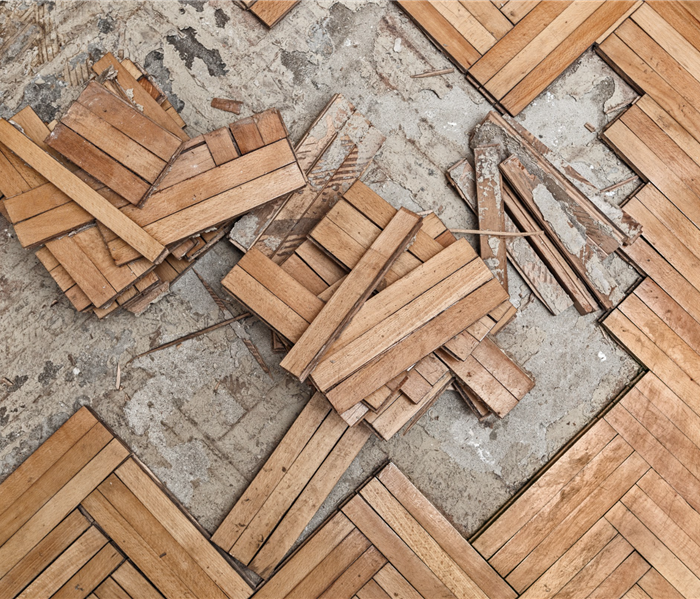Water Damage Effects on Drywall, Wood and Carpet
12/28/2020 (Permalink)
Below Are Three Common Materials Prone To Water Damage
Unexpected water in your Uptown, CA, home, such as a supply line leak, affects the different materials in your home in different ways. Although seeing swelling wood or peeling paint may bring on thoughts of having to replace everything or extensive repairs by a water damage and restoration company, not everything is necessarily unsalvageable. Below are three common materials prone to damage and how they are affected by water.
1. Drywall
The biggest issue with drywall is that it is an organic, porous material, which means the chances of mold forming greatly increase. If you don’t know you need a water pipe repair, a hidden slow leak means water is slowly being absorbed into your walls. Unfortunately, the damage isn’t always visible. If you begin to see peeling paint, the drywall feels spongy or you see mold growth, the affected drywall will need to be replaced.
2. Wood
If your home has wood floors, furniture, and cabinets, preventing water issues should be a priority. Although wood is durable, it is still quite porous. It’s also important to remember that the home’s structure, such as beams, are also made of wood. Signs of damage include cupping, staining, and swelling wood. Taking fast action is necessary to avoid having to replace extensive and important wood features. There are also different types of wood, such as particleboard, plywood, and hardwood. For the first two, they are often treated to be water-resistant but can begin to sag or weaken due to excess moisture. If your hardwood floors are discolored and stained, there may be a good chance that a replacement will be necessary.
3. Carpet
While the carpet itself may be able to withstand a large amount of water, the padding below may not. The water source also is a deciding factor on if cleaning will be enough. If there was flooding or sewage involved, it is contaminated water. In those cases, replacement is a safer option.
From swelling wood to mold on the walls, the materials in a home aren’t always designed for excessive amounts of water. Luckily, there are experts available to help you salvage more than you may think.






 24/7 Emergency Service
24/7 Emergency Service
